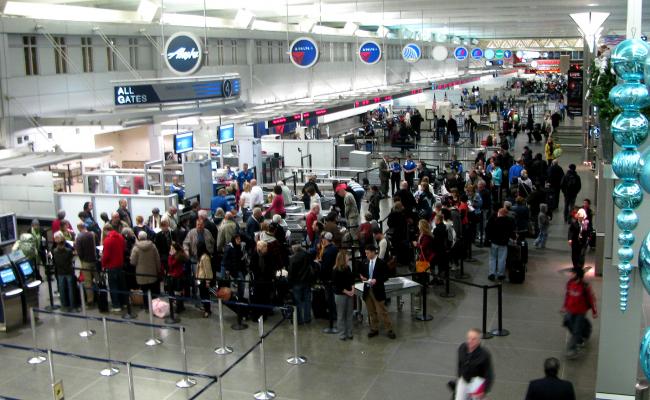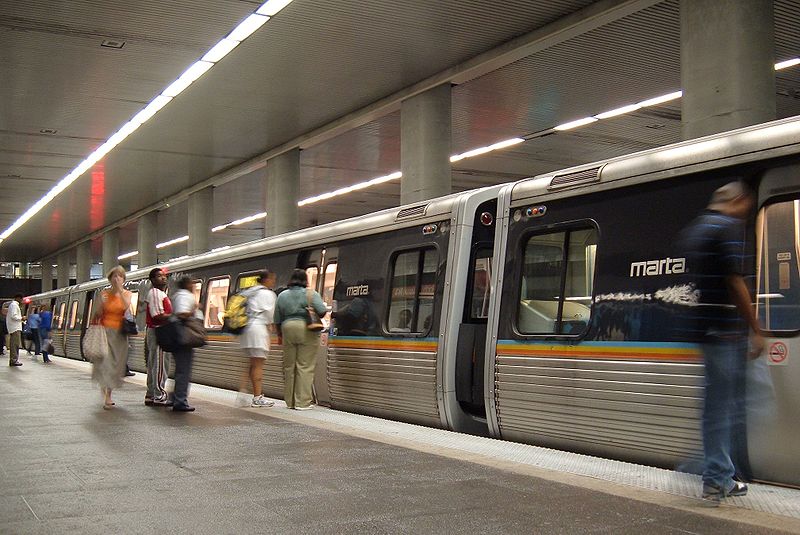It's the invasion of the body scanners.
Los Angeles Metro will be the first U.S. transit agency to use a security system created by the federal Transportation Security Administration to scan riders as they enter the system, the agency announced this week. New York and San Francisco has also been testing the technology, which TSA says will thwart terrorism or mass shootings. The agency says it plans to install the system at transit stations around the country, the New York Times reports.
These body-scanning machines are similar to those used at airports, but not as obtrusive to customers. The machines do not require passengers to wait in line but simply scan riders from a distance of 30 feet in search of items such as explosives or assault rifles, an LA Metro spokesperson told the paper, dismissing riders' inevitable concerns about privacy or inconvenience. But authorities admit there will be false positives among scanned customers, leading to delays.
Some critics say the devices will not likely have a big impact on safety and will instead make public transit more of a hassle — and inconvenience and delays are two of the leading factors that depress transit ridership. Metro officials told the LA Times' Laura Nelson that if people do not agree to be scanned, they will not be allowed to ride the train that day — a policy that has Fourth Amendment implications.
Metro's embrace of TSA scanners also raises questions about over policing and racial profiling, which has dogged LA Metro, says Streetsblog LA's Sahra Sulaiman.
"These are sort of constant issues that are raised," she said. "Who are we protecting? Who are we protecting them from? It’s sort of a security theater approach."
LA is rolling out the new system as it prepares to host the Olympics in 2028, said Sulaiman. But if the scanners are randomly deployed at only a few stations, the protection against terrorism is mere window dressing, as a would-be bomber could simply go to another station to board. Metro officials did say that the new TSA checkpoints will not coordinate with any immigration enforcement agencies, but that policy is rare around the country.
Then there's the question of how much these types of scans will really help improve safety. New York's Port Authority bus terminal was the site of a pipe bombing, late last year, but no one was killed or injured. The Mineta Institute reports only 12 attempted attacks on U.S. transit systems since 1970. Only three of those were fatal and it is not clear that they could have been prevented with body scanners. In 1995, for example, an Amtrak train was derailed by a neo-Nazi, Mineta reports. Then again, a body scanner that happened to be deployed in the right place at the right time might have deterred Long Island Rail Road gunman Colin Ferguson, who killed six people with a 9mm pistol in 1993.
Brian Taylor, director of the Institute of Transportation Studies at UCLA told the New York Times that transit riders are still much more likely to be a victim of a more mundane crime on transit than a terrorist attack.

Sulaiman points out a man was caught masturbating this week aboard an Expo Line train and he is still at loose. And almost a two years ago, a young man, 23-year-old César Rodríguez, was struck and killed by a Metro train fleeing a police interrogation over fare evasion, an incident local civil rights activists say never should have occurred. Such actual crimes are more likely than the vague threat of terror to undermine confidence in a city's transit system.
Beyond that, there is little evidence that TSA scans are very effective at reducing the likelihood of a terror attack. A team of undercover Homeland Security officers tested the effectiveness of the airport system in 2015 by sending 70 agents with weapons through security. All but three were cleared for their flights. Many experts doubt that the TSA scans have ever stopped a terrorist attack, but they have certainly made flying a bigger hassle. Some experts question whether the current airport scanning systems are even necessary. And if airport hassles incentivize people to drive more, such systems will end up leading to more deaths, not fewer.
There have been few transit-related terrorist attacks in the U.S., but there has been a rash of criminals using cars and trucks as their weapons. The murderous attack in Charlottesville, Virginia, last year and on the Hudson River Greenway in New York the previous year could not have been prevented with scanners at local train stations. New York City has moved to install bollards in crowded areas to prevent these kinds of attacks. London has made infrastructure changes to deter terrorist attacks on trains by, for example, limiting the number of trash cans on platforms and deploying see-through bags.
Prior to the latest development, U.S. transit agencies mostly use special bomb-sniffing dogs or "See Something, Say Something" campaigns to guard against terrorism.






